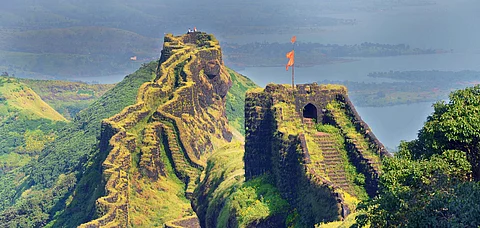
- Destinations
- Experiences
- Stay
- What's new
- Celebrating People
- Responsible Tourism
- CampaignsCampaigns
- SubscribeSubscribe
- Buy Now

Aiming for World Heritage Site tag for 14 forts, the Maharashtra government has submitted a tentative 'serial' nomination for these 17th century sites. The historical forts constructed in the Maratha military architecture style belong to the era of Shivaji and are under the theme of Marathi military architecture.
A serial nomination list passed by the Archaeological Survey of India has been forwarded through the Ministry of Culture to UNESCO. The nomination list has also been accepted by UNESCO in the Tentative Lists of its World Heritage Sites.
A tentative list is an 'inventory' of properties of a place that a country believes deserves to be tagged as a World Heritage Site as underlined in the operational guidelines of the World Heritage Convention.
UNESCO World Heritage sites around the globe are considered to be a location possessing outstanding universal value that has either natural or cultural significance.
The 14 forts submitted for the tag have the historical significance of belonging to either the era of Peshwa rule or the battle between the Marathas and Mughals.
The forts are
Raigad Fort
Originally called Rairi, it is wedged on a large chunk of the Sahyadri hill, and detached from the main range by a canyon. It was the capital fort of the Maratha Empire and was rebuilt during the coronation of Shivaji.
Torna Fort
It marks the commencement of the Maratha Empire in 1646 in Pune district. This fort is said to have been captured by Shivaji when he was just sixteen.
Rajgad Fort
This used to be the capital of the Maratha Empire in Pune district before it moved to the Raigad Fort. The hillfort was under the protection of Shivaji for almost 26 years.
Shivneri Fort
Built near Junnar in the Pune district, this is a marvellous example of Bahamani/ Nizamshahi architecture. The fort is the birthplace of Shivaji and provides a backstory to the army's guerrilla warfare techniques.
Lohagad Fort
Built in the 14th century, this is an excellent example of Maratha hill fort architecture in the Peshwa period. It is close to Lonavala and has the backdrop of the picturesque valley.
Mulher Fort
It is considered to be a symbol of victory as it was instrumental in ending the third Maratha war when Mulher surrendered. This hill fort in Nashik is bordered by Mora to the east and Hatgad to the west.
Salher Fort
Situated in Dolhari range of Nashik, it is one of the highest forts in the Sahyadri range. The 1672 battle between the Marathas and Mughals was fought at Salher.
Rangana Fort
Situated 112 km from Kolhapur, this one lies at the border of Kolhapur and Sindhudurg. During the Deccan campaign, Aurangzeb tried to capture this fort, along with Bhudargad and Samangad, but did not succeed.
Kasa Fort
Also known as Padmadurg fort, it is built on a rocky island off the coast of Murud, and once offered a base for naval military forces.
Sindhudurg Fort
A sea fort, it is considered to be a masterpiece in military defense and was built by Shivaji in 1668.
Ankai Tankai Forts
These are two separate forts built on adjacent hills with a common fortification wall. The Ankai and Tankai are located in the Nashik district.
Alibag Fort
It was chosen as one of the forts to be exhibited as a naval base by Shivaji. It is popularly known as Kulaba Fort.
Khanderi Fort
This is a site of significance as it witnessed many battles between Shivaji&rsquos forces and the naval force of the Siddhis. The fort was built in 1679 but officially named Kanhoji Angre Island in 1998. It is located 20 km south of Mumbai.
­Suvarnadurg Fort
This is an island fort which was repaired and reinforced by Shivaji in 1660.
Find out more here.
